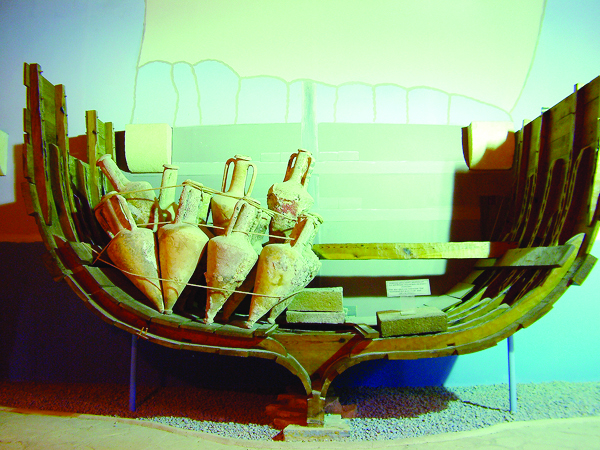Kyrenia
In 1965, local diver Andreas Cariolou, who hunted sponges at a depth of 30 meters about 1 km off the shore, came across a pile of ancient amphoras. It turns out that these ruins mark the resting place of an ancient Greek merchant ship that sank in the 4th century BC. This ship was the very own ship named Kyrenia. When the remains were examined, it was thought that the ship belonged to 300 BC. The Kyrenia ship has sailed in the Mediterranean for the life of Alexander the Great and his successors. She sank in open waters less than a mile from her anchorage in Kyrenia harbor. It is not known for certain whether this sinking was the result of a pirate attack or as a result of seasonal conditions.
Uncovering the Kyrenia Merchant Ship Following the discovery, the Kyrenia shipwreck was cleared in Kyrenia. The site was explored and later excavated by a team from the University of Pennsylvania under Michael Katzev between 1967 and 1969, about 400 (Samos and Rhodes) amphorae, about 30 millstones, coins, anchors, iron flower, stone ballast, rope, tools, and various other cookware and cooking utensils were obtained at the site of the wreckage. More than 10,000 almonds, 18 olive seeds, 760 grape seeds, more than 10,000 fig seeds, and more were found among the pots. In the Kyrenia museum exhibition, the shipwreck Kyrenia was excavated and raised with timber and timber that remained intact, keeping its dimensions intact. During the summer of 1968 and 1969, the expedition of 50 underwater archaeologists, students, and technicians used stereo-photography and other advanced techniques to record the position of each object before it was raised. The ship was studied from 1971 to 1973 for the preservation and preservation of wood remains. These studies were continued under the expert supervision of the late J. Richard Steffy. Special tanks were asked to help mount the sunken ship Kyrenia in the castle of Kyrenia. This area has become a museum.
Features of the Ship
It was understood from the number of wooden spoons, oil jugs, salt shakers, and glasses found in the Kyrenia shipwreck that the crew on the last expedition was four. The ship was built using the "first shelf" method, which is the opposite of today's method. Kyrenia ship, first the outer planks that rise from the keel are built, then the ribs are placed. The ribs of the famous ship are fixed with copper nails. According to the researches, the Kyrenia ship was over 80 years old on the day it sank.

